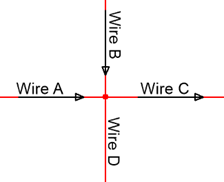2.4 Homework Problems: Algebraic Word Problems
1. Translate each algebraic expression into an equivalent English phrase. (There may be more than one correct answer)
a. 4x − 7
b. 9/(x−3)
2. Write an equivalent English phrase. Choose your own variable
a. A number decreased by 13
b. Eight more than the product of 5 and the sum of a number and 2
c. Twenty increased by 4.8 times a number
d. Nine more than 3 times the sum of 14 and a number
e. Write an algebraic expression for the following
f. The cost of purchasing a multimeter and a power supply if the multimeter costs x dollars and the power supply costs $25.00 more than twice the cost of the multimeter
g. The cost of x transistors if one transistor cost 58 cents
h. The amount of cupcakes needed for an event if everyone gets two cupcakes. You want to buy 10 extra just in case.
3. Solve each of the following word problems
a. Seven times a certain number is equal to the sum of twice the number and 35. What is the number?
b. When 17 is added to six times a number the result is equal to1 plus twice the number. What is the number?
c. Find three consecutive odd integers such that 4 times the first is 44 more than the sum of the second and third
d. The sum of two consecutive even integers is 78. What are the integers?
e. The total cost of a computer flash drive and a printer was $225.50 including tax. If the cost of the flash drive was $170.70 less than the printer, what was the cost of each item?
f. Amy, Mike and Paul all work at a restaurant. In a given night, Amy waited on 5 more tables than Paul. Mike waited on twice as many tables as Amy. How many did each person wait on that night if the total tables was 35?
g. Kirchhoff’s current law states that the current entering any node(point) in a circuit must equal the current leaving the node, I1 + I2 + I3 + I4 = 0.
-
-
- Four wires (A, B, C and D) met at a particular node in the circuit.
- Wire A has 23.4ma of current entering the node.
- Wire B has 1.7 times the current entering the node than Wire A does
- Wire C has 10.7mA more current leaving the node than Wire B had entering the node.
-
How much current is entering or leaving the node through Wire D?

Unit 2.4 Homework Printable Copy